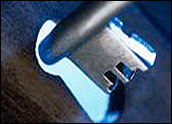
Retailers’ worst nightmare has indeed come to bear: American consumers have permanently changed their buying habits, according to research by several firms. Gone are the days of shopping as a pastime. And, for all practical purposes, brand loyalty has just about evaporated.
In its grocery-buyer survey, for example, Deloitte found that 84 percent of those polled were focused on cutting spending and saving money rather than on buying into trends or purchasing favorite brands. Most of the respondents said there were only “two or three brands” they could not live without. This does not bode well for retail sales for perhaps the next decade.
Enter customer experience management (CEM) to save the day.
“When consumers literally stopped shopping, making the most of every customer experience became the defensive strategy to stay in business,” Cheryl Flink, vice president of customer experience solutions for Market Force Information, told CRM Buyer. “Corporations asked: ‘How do I maximize the spend of this customer at this moment in time by providing a great experience?'”
Have a Dog, Bring a Dog
So what is CEM? It is a process wherein businesses intently study the entire customer experience from start to finish and over every channel. They then enhance it anywhere and everywhere they can to hold onto their buyers and encourage them to spend, spend, spend.
Everything — from improved parking (think free valet parking and shuttle services) to loyalty services (ranging from mobile LBS to special privileges and free gifts) to the eradication of lag time on Web sites and the addition of localized customer service reps in contact centers — is on the table. Sorry, “Bob” from India, you’re out (except to serve customers from India where you are so in!) Hello, Billy Bob from Columbus, Ga., and Cindy Baker from Attica, Ind., and other members of the newly founded All-American CSRs!
CEM is why AT&T now answers customer calls with “How can I make you feel like a valued customer today?” delivered by a real person with an oh-so-American accent.
Sometimes retailers go all Match.com on the customer rep thing. Take Activision Blizzard, for example. The company, a worldwide pure-play online and console game publisher, uses CRM to allow actual gamers to work remotely and serve as customer service reps. The thinking behind that: gamers can serve gamers better than non-gamers or Luddites trained on the fly.
Internet-based bank ING Direct has opened seven cafes around the country to attract and better serve customers. The reps do double and triple duty as mortgage and banking advisors +baristas +food service personnel. Yes, there are even free hot dog days and free stuff for your dog days.
This — a far cry from the days of stuffy bankers enshrined in marble tomb-like banks — is moving toward a new customer service norm even in the hallowed halls of finance. Hey, come sit a spell, bring your dog, have a specialty coffee — or a hot dog on us — get comfy, use our computers and yes, spend, spend, spend!
Having surgery or tests done at a local hospital? Don’t be shocked if the nurses serve you refreshments too. Y’all come back now, you hear?
But is all this desperate pandering working? Yes, it is.
Customer Is Right Again
The American Customer Satisfaction Index has tracked customer satisfaction for over 25 years. Scores have increased sharply over the last two years across every industry in keeping with large scale adoption of CEM practices.
The impact is so dramatic that stockholders are beginning to take notice. The evidence is in, and it is compelling. For example, leaders in Forrester’s Customer Experience Index have outperformed other companies in the stock market.
“There is a movement to watch companies that are doing it right,” Chris Cottle, vice president of marketing for Allegiance, told CRM Buyer. “Stock analysts and traders are tracking companies with good CEM and finding that their stock performs better than others do.”
It is important to remember that this is not a trend; it is a return to retailing roots. It is a modernization of the old adage “the customer is always right.”
“CRM advanced starts to look like CEM,” Aaron Keller, managing partner of Capsule, told CRM Buyer.
“But, CEM takes a broader view of what kind of engagement you want with people. It touches all five senses and certainly isn’t only an online phenomenon,” he pointed out. “Any brand can leverage it. All brands have a customer experience, but few actually thought about it until recently.”
CEM is about more than managing the customer’s experience in the now; it is also about managing the experience over each customer’s lifecycle.
“This movement reflects the natural evolution from CRM, which was all about automating a ‘sales-transaction’ product-centric business model … to CEM, which is about enabling a new customer-centered business model that views customers as ‘life-time annuities,'” Jeff Gilleland, global strategist for customer intelligence solutions at SAS, told CRM Buyer.
Moving from “customer as a commodity” to the “customer as an annuity” is a successful shift primarily because it returns the human factor to the business model.
Compare a happy staff that offers a customer a double latte to a store bereft of sales clerks. It isn’t hard to figure out which model works.





















































